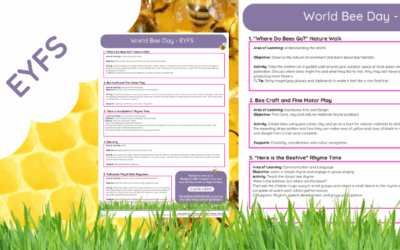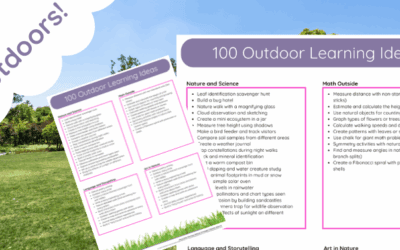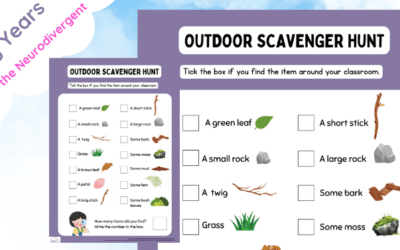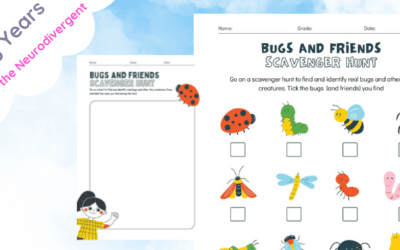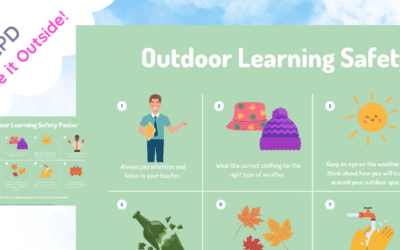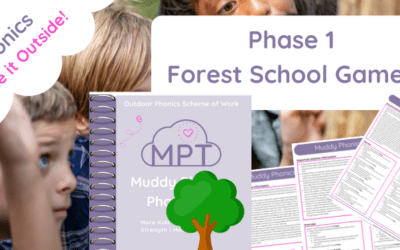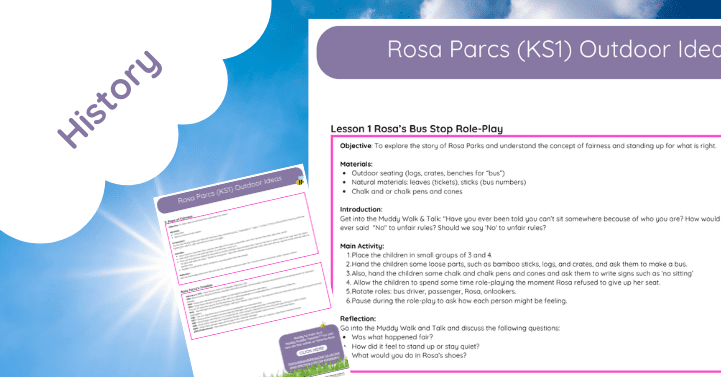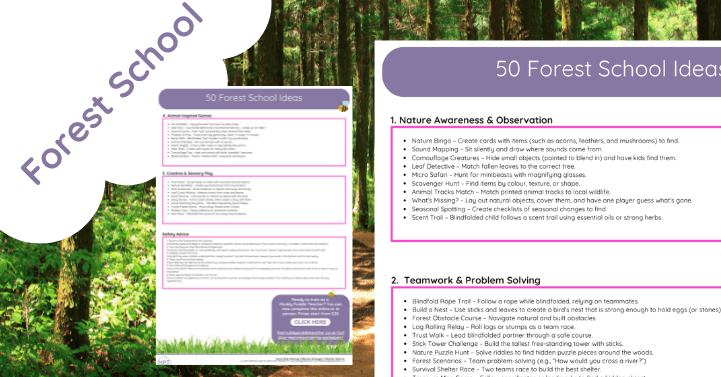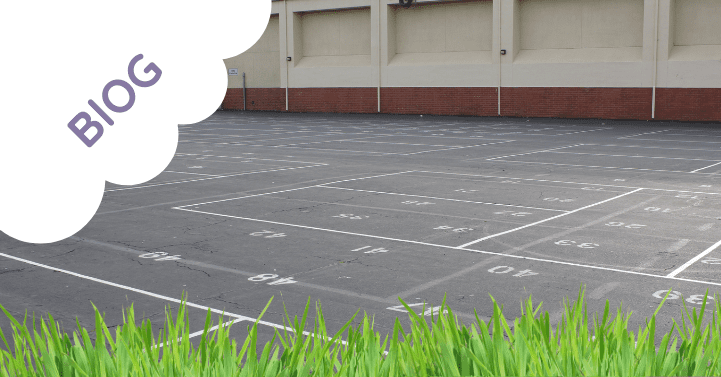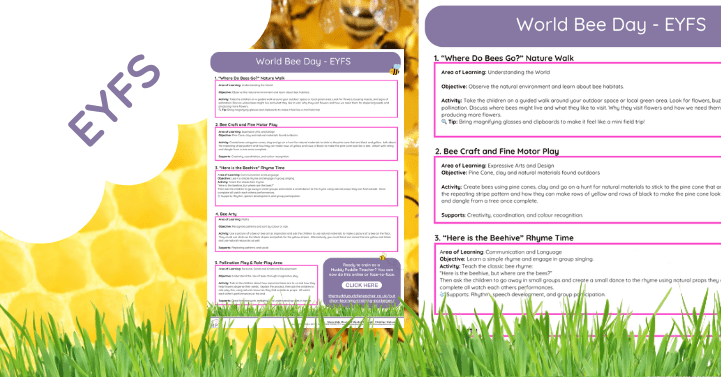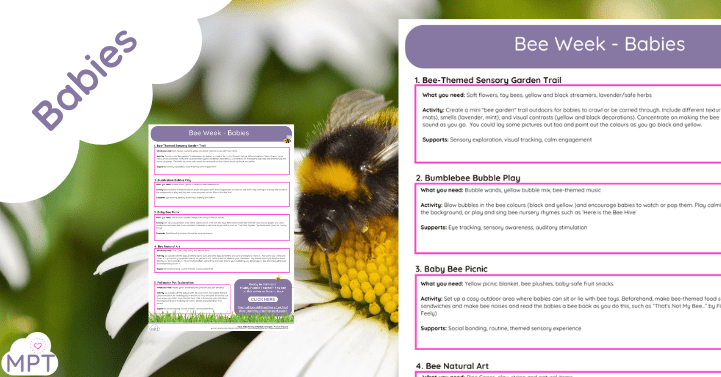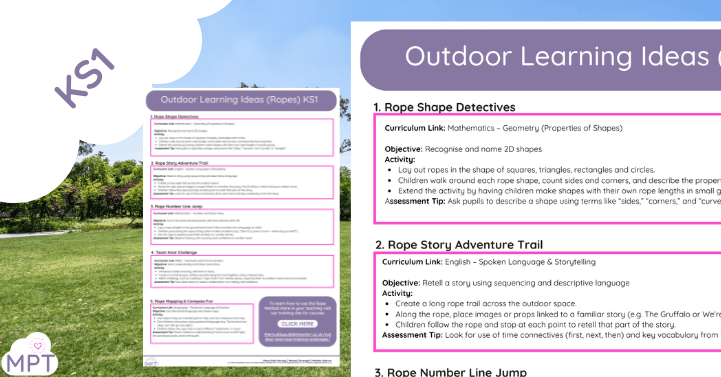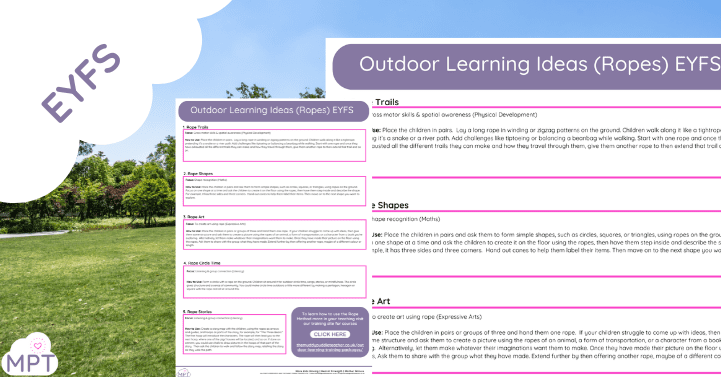World Bee Day EYFS Resource Pack Buzz into nature-based learning with our World Bee Day activity pack – created just...
Outdoor Learning Ideas using Ropes (EYFS)
May 17, 2025
Outdoor Learning Ideas Using Ropes (EYFS) is a practical and engaging resource designed to support early years...
10 Outdoor Valentines Day Lesson Ideas
May 4, 2025
10 Outdoor Valentine’s Day Lesson Ideas Celebrate kindness, connection, and creativity – the muddy way Bring the...
10 Outdoor Ideas for VE Day – EYFS
May 4, 2025
10 Outdoor Ideas for VE Day – EYFS Celebrate VE Day the muddy way! This unique collection of 10 Outdoor Ideas for VE...
100 Outdoor Learning Ideas
Apr 27, 2025
100 Outdoor Learning Ideas: Spark Curiosity, Adventure, and Discovery! Step outside and transform any outdoor space...
Outdoor Learning I Spy & Talk
Apr 10, 2025
Outdoor Learning “I Spy and Talk”Build language, observation, and connection through nature play. Turn every outdoor...
Outdoor Learning Colour I Spy
Apr 4, 2025
Outdoor Learning I Spy🔍 Spot, search, and learn with nature! Turn any outdoor space into a playful learning adventure...
Outdoor Learning Colour Scavenger Hunt
Apr 4, 2025
Outdoor Learning Scavenger Hunt
Apr 4, 2025
Outdoor Learning Scavenger HuntExplore nature. Spark curiosity. Learn through play. Take learning beyond the classroom...
Bug Outdoor Learning Scavenger Sheet
Apr 4, 2025
Outdoor Learning Scavenger Hunt Tick SheetInspire curiosity. Explore the outdoors. Learn through play. Make outdoor...
Outdoor Learning Activities for Nursery – Resource Pack
Mar 29, 2025
Outdoor Learning Activities for Nursery – Resource Pack 🌿✨ Bring early years learning to life with our Outdoor...
Outdoor Learning Safety Poster
Mar 29, 2025
Outdoor Learning Safety Poster Keep your outdoor learning sessions safe, clear, and confident with our vibrant Outdoor...
Forest School Phonics Games (Phase One)
Feb 10, 2025
Engage young learners in phonics through nature-inspired, multi-sensory Forest School games. Our Phase 1 Phonics...
Phase Four Phonics Games (Parachutes)
Feb 10, 2025
Phase 4 Phonics Parachute Games – Active Learning for Confident Readers Take Phase 4 phonics outdoors with Parachute...
Phase 2 Phonics Games (Parachute)
Feb 10, 2025
Phase 2 Phonics Outdoor Parachute Games – Active Learning for Early Literacy Bring Phase 2 phonics to life with our...
Parachute Games Phase One
Feb 9, 2025
Parachute Games for Phase 1 Phonics – Engaging, Active Learning Outdoors Transform early phonics learning into an...
Phase 2 Flash Cards
Feb 6, 2025
Phase 2 Flashcards – Fun & Interactive Learning in Nature! Take phonics learning beyond the classroom with our...
Football Phonics Games (Phase 3)
Feb 4, 2025
Football Phonics Games – Phase 3 Make Phonics Active, Engaging, and Fun! Football Phonics Games – Phase 3 is designed...


